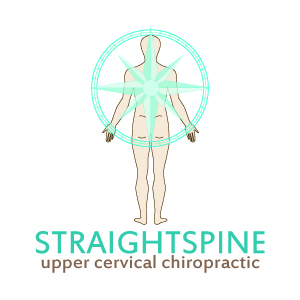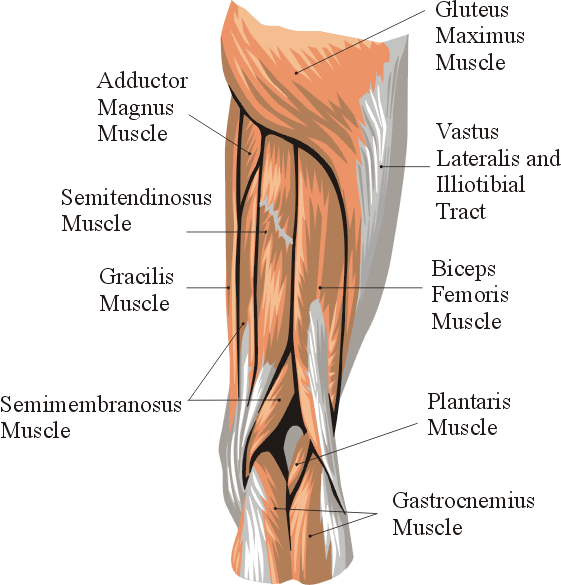Sacroiliac Pain - A Guide to self-treatment
“Hey doc, I’ve got this pain right here and it’s going down into the butt and sometimes down my leg,” says John, while pointing to the his right side where his low back ends and his pelvis begins. “It hurts when I bend over, when I’m lifting and when I’m getting up from a seated position. I think it might be sciatica.”
Sound familiar? A good majority of our Straight Spine Family suffer from sacroiliac joint dysfunction (SID) also known as sacroilitis. It can commonly be mistaken for sciatica because of the radiating pain many experience going down the leg. Sciatica, however, is typically due to an impingement of the nerve root and travels down the back of the thigh and sometimes down the back of the calf. SID, on the other hand, can show up as a deep ache down the back, the outside, groin or front of the leg as well as deep into the buttock. It is important to note that these two conditions are easily confused, and the treatments for each of these is quite different, but; we’re here to talk about SID, not sciatica.
SID usually occurs due to pelvic instability or imbalance and there are many reasons that the pelvis could be unstable but the usual culprits include pregnancy, ligament laxity, muscle imbalance in the legs and pelvis and spinal misalignment resulting in pelvic un-leveling.
For those with ligament laxity in the sacroiliac joint, it can also be helpful to wear a sacroiliac belt to help support the joints while performing activities that strain this joint. However, it is important to remember that braces of any kind are not designed for continuous wear as it will cause muscles to weaken! It is also important for this same reason to perform rehabilitation exercises regularly.
For all the expectant mother’s out there, it can also be helpful to wear a sacroiliac belt to help support the joints while the joints are more unstable. It is also important to see a pelvic health physiotherapist after giving birth.
The second issue of muscle imbalance can be corrected at home with some guidance. Before we get into the nitty gritty details as to what to do, lets walk you through why this is an issue. Most of us are more sedentary than we should be: too much driving, too much sitting, not enough movement or stretching. This can result in tightness in the muscles and fascia that support the pelvis, namely the quadriceps (made up of the Rectus femoris, Vastus lateralis, Vastus medialis, Vastus intermedius) and the psoas. These are your hip flexors. If you tend to cross your legs when you sit, your adductors and tensor fascia lata can also be an issue.
Tightness in these areas can then force your pelvis to rotate forward resulting in your extensors and stabilizers: gluteus maximus, gluteus minimus and medialis, piriformis and hamstrings (semitendinosus, semimembranosus, and biceps femoris muscles) to work over-time. The extra work being done by these muscles can irritate the corresponding tendons and ligaments, irritate and inflame the sacroiliac joints.
So how do we correct the imbalance in these areas? Did you say stretching? Absolutely! However, that is only part of the equation. In my experience, foam rolling is also a necessity to work out those tight hip flexors and adductors. Stabilizing exercises can also help to strengthen the appropriate muscles. Instructions on how to perform these exercises, can be downloaded here.
I assume most of our readers are current, loyal patients of ours. Thank you for your trust in us, you are already taking care of the final issue: spinal misalignment resulting in pelvic un-leveling. If you are new to us, it’s not too late, we can help you level your un-level pelvis!
In the rehab world, pelvic un-levelling is typically defined as one side of the pelvis being lower than the other. This can sometimes be corrected with corrective exercises, but in upper cervical chiropractic circles, pelvic un-levelling is typically a sign that your alignment is off resulting in crooked posture, increased gravitational stress on the spine and pelvis thus leading to increased work being performed by the postural muscles throughout the body. This extra work can then cause an increase in muscle tension leading us back to tightness and imbalance in the legs that we spoke of earlier.
Sacroiliac self-care boils down to two primary actions:
Stay in alignment and minimize time out of alignment by keeping up with your visits with any of the chiropractors at Straight Spine Chiropractic, and
Stay on top of your pelvic health by performing stretching, foam rolling and strengthening exercises regularly.
Hopefully you find this guide helpful. If you need assistance with the exercises or with fitting a sacroiliac belt, please do not hesitate to contact us. We will also be carrying foam rollers and myofascial balls in the clinic to help you overcome your sacroiliac challenges. Should you have any questions or concerns, or would like to book an appointment with us, please do not hesitate to call us at (250) 334-2262.




